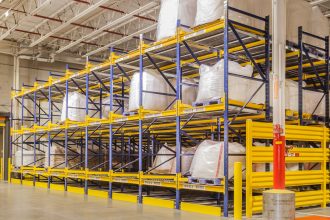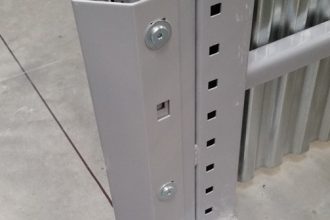New Employee Training: Teaching The Basics Of Rack Inspection

To ensure the safety of personnel working in and around industrial steel storage rack, it is important to train new (and existing) employees on the basics of rack inspection. There are several areas that associates and forklift operators can assess visually to identify damage and overloading conditions.
“Some operations give their associates formal checklists to follow on a scheduled routine. Others ask their employees to continuously pay attention to rack conditions and alert a manager to the specific aisle and bay where a problem exists,” said John Clark, Director of Marketing at Steel King Industries, a member of the Rack Manufacturers Institute (RMI). “Either way, it’s important to train personnel to look for key issues that are most likely to cause serious damage or injury.”
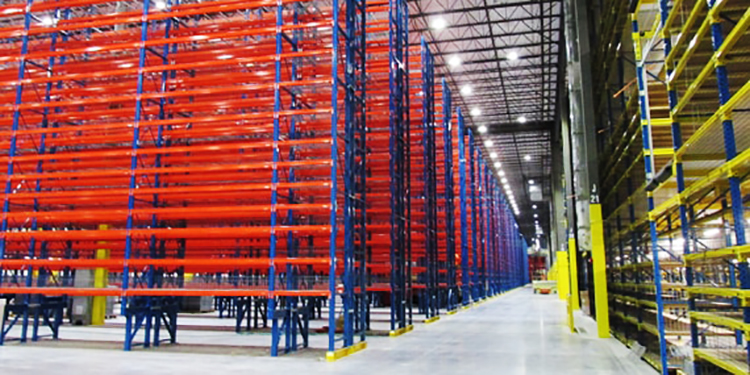
Clark noted that—prior to loading the racks—formal inspections are required during and immediately after commissioning. Either the rack manufacturer or an independent, professional inspection agency hired by the end user can conduct these inspections.
During day-to-day operations there are six primary areas to train associates to look at when conducting a rack inspection, Clark advised. They are as follows.
Inspection Area #1: Environment
The surroundings of the pallet rack structure are the focus of this inspection, Clark said. “Aisles should be clear of obstacles that can prevent forklift operators from navigating freely to and from pallet positions,” he explained. “The more maneuvering they have to do, the more likely they are to accidentally impact a rack.” Per code requirements, emergency personnel egress aisles also need to be kept clear of obstructions.
Also, it’s important to verify that any rack protectors or other protective guarding devices in use are intact and in their proper positions. These guardrails and column protectors shield rack uprights against impacts from forklifts and other moving equipment.
“Lighting is another rack safety factor to inspect,” added Clark. He noted that the brighter the surroundings, the less likely forklift operators are to collide with rack structures or other obstacles.
Inspection Area #2: Rack Condition
The rack columns should be plumb and level. Any leaning or bowing of the columns can significantly reduce the load capacity of the structure. Those conditions also increase the risk of a rack collapse. Additionally, train employees to note any rust or corrosion as part of their visual rack inspection. The presence of either typically indicates a past collision and can potentially weaken the rack system’s capacity.
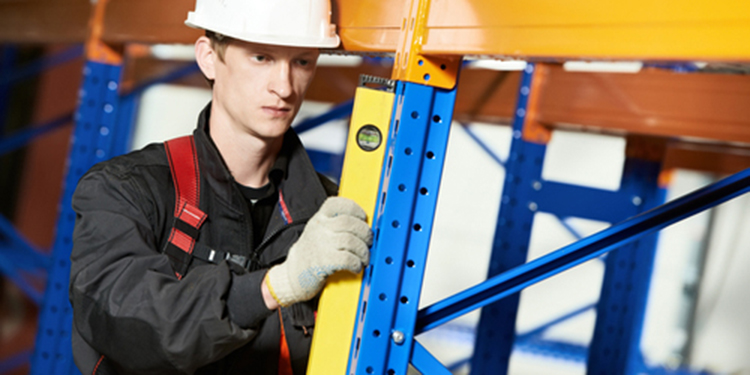
Overloading often causes rack failure, said Clark. “This can happen inadvertently when rack load or profile changes occur without verifying capacities,” he explained. “Beams have a rated capacity per pair when equally loaded, while uprights’ capacity ratings greatly depend on beam spacing. If the structure is holding excessive or unbalanced loads, the risk of collapse increases.”
Clark advised training employees to become familiar with storage rack load capacity plaques. These plaques offer a concise, visual description of the maximum unit load capacity each storage position can hold. Post plaques either on the structure or near the system where associates can easily see them. This reference will help them more accurately assess capacity when conducting a rack inspection.
Inspection Area #3: Rack Uprights
If an upright appears bent or twisted, it’s important to determine how severe the damage is. Train employees to assess the degree of damage by using a straight edge to measure the gap along the surface of the concave side of the upright. If any distance between the upright and the straight edge exists, it likely needs repair or replacement, noted Clark.
“It’s also important to teach employees to identify bending, broken, or missing braces,” he continued. “Bending, twisting, or broken welds in any braces connected to uprights can significantly reduce the rack’s capacity.”
Further, a rack inspection should include a routine examination of the base plates and anchor bolts at the foot of each upright. These components work together to secure the racking structure to the facility floor and keep it upright. Any damage to these parts, or to the concrete underneath or surrounding them, can indicate impact damage and an unsafe situation.
Inspection Area #4: Assembly
Employee training should include identifying the key components of the rack structure and understanding their purpose. This includes baseplates, shims, spacers, safety clips and pins, anchors, bolts, and safety bars.
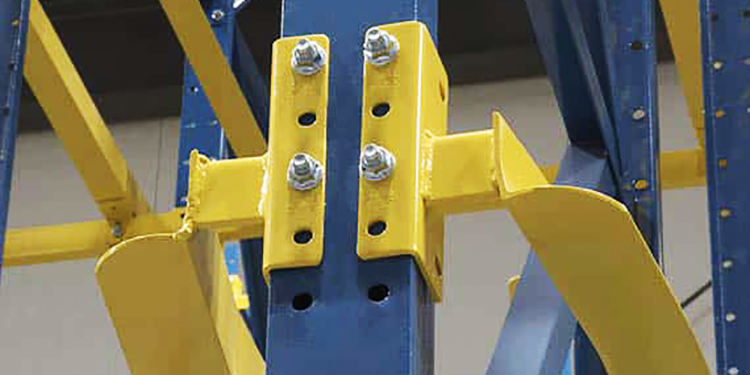
“If associates know what components should be part of a correctly assembled rack, they can more easily identify an incorrect assembly or when parts are missing,” Clark explained.
Additionally, Clark advised training personnel to know what proper alignment and nesting of components looks like. “A loose or misaligned part can negatively impact the safety and integrity of the structure,” he said.
Inspection Area #5: Rack Beams
As the primary point of contact with each pallet load, the rack beams must be properly seated in the uprights and securely fastened.
“Most racks use some kind of connector hardware—aside from the teardrop or keyhole—to ensure tight beam-to-column fit and rack safety,” noted Clark. “Some even utilize more than one method. Train associates to look around beams for broken welds and loose or missing safety clips or bolts as part of the rack inspection.” A dislodged beam connector from the upright post can cause real problems; train associates to look for it or replace it.

Deflection, or bowing, of the beams naturally occurs when they are supporting a load. While a certain amount of deflection is acceptable, it should disappear after unloading the beams. If it doesn’t, overloading or impacts have deformed them, and it’s time to install replacements.
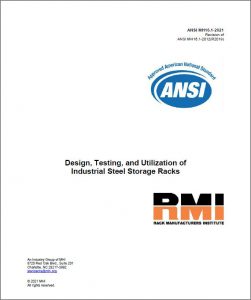 RMI’s ANSI MH16.1: Design, Testing and Utilization of Industrial Steel Storage Racks notes that the maximum beam deflection limit equals the horizontal length of the beam divided by 180, Clark added. “Put another way, beams shouldn’t bow more than 1/180th of the total length of the beam. For a 96-inch beam, that’s half an inch.”
RMI’s ANSI MH16.1: Design, Testing and Utilization of Industrial Steel Storage Racks notes that the maximum beam deflection limit equals the horizontal length of the beam divided by 180, Clark added. “Put another way, beams shouldn’t bow more than 1/180th of the total length of the beam. For a 96-inch beam, that’s half an inch.”
Inspection Area #6: Usage
A basic rack inspection should also include an assessment of clearance around the loads themselves. Unit loads stacked too close to building features—such as sprinkler systems—or that encroach into the flue space between rows are a fire hazard.
“Likewise, train employees to look at the pallet loads themselves,” said Clark. “Overhanging or double-stacked pallets are unsafe. So are damaged pallets, or pallets that are not the right size for the rack.”
Finally, any containment systems—such as flexible safety netting or rigid steel mesh panels—that prevent loose items or cartons from falling into aisles should be securely in place. If they appear detached or damaged, employees should note and report the defect.
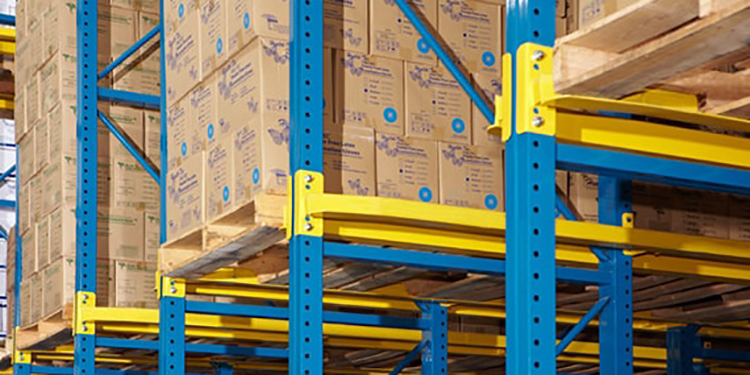
Upon noting an unsafe rack situation, train employees to immediately alert the operation’s manager or owner of the issue, Clark concluded. “The structure should be promptly unloaded and access prohibited in the surrounding space until the problem is corrected.”
Looking for more information about RMI’s rack safety initiatives? Listen to a recent MHI Cast podcast recording about rack safety.

